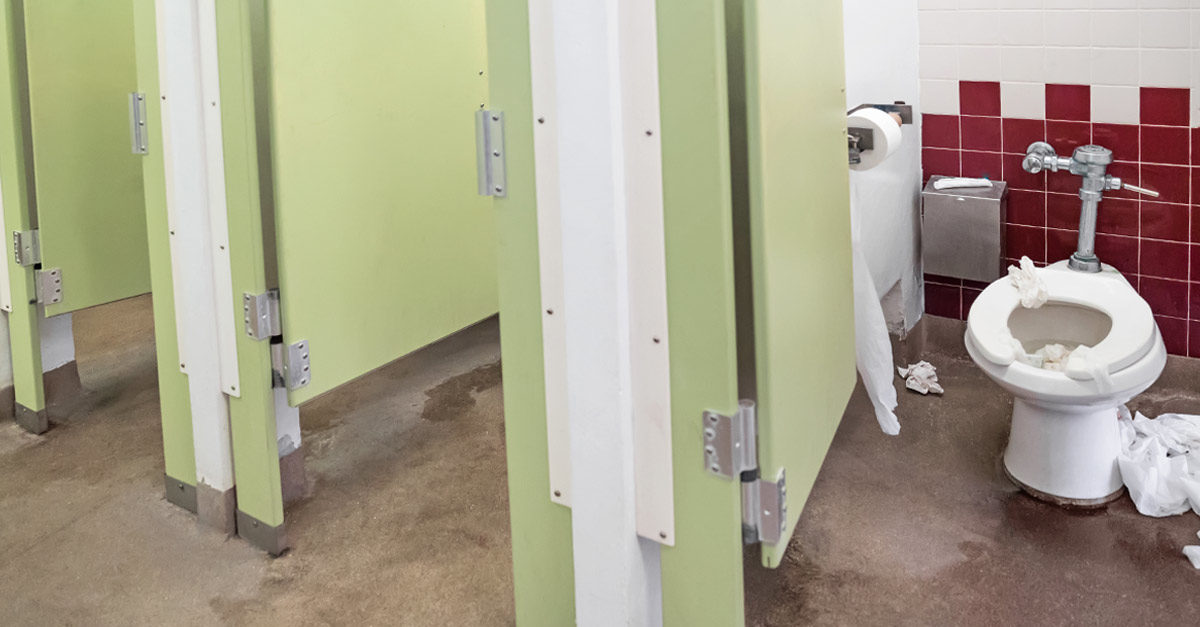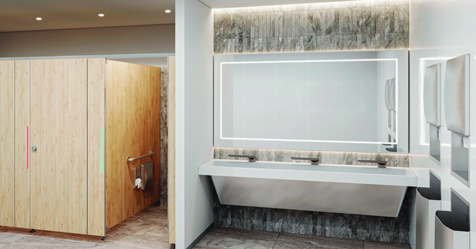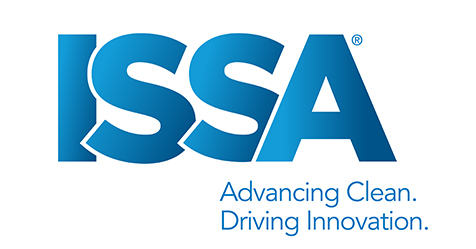Nobody wants to encounter a dirty public restroom, yet most people have. Nearly 70 percent of surveyed Americans say they’ve had an unpleasant restroom experience due to the condition of the facility. Survey participants listed their biggest aggravations as a lack of toilet paper and paper towels, clogged toilets, broken stall doors, foul odors, and an overall dirty or outdated appearance. Another national survey found that 93 percent of Americans would consider a public restroom dirty if it had dirty or sticky floors.
To keep restroom guests happy and maintain a facility’s reputation, it’s important for building managers to take proper care of all restrooms. Follow four best practices:
- Select quality restroom cleaning products.
- Train cleaning staff.
- Create a cleaning log.
- Install smart, automated solutions.
When restroom cleanliness is not a priority, facility managers put customer satisfaction, health and safety, and their comapany’s bottom line at risk. Understanding best practices will ensure restrooms are always clean and meet, or even surpass, guests’ expectations.
The Impact of a Dirty Restroom
Restrooms may become dirty for numerous reasons, including the janitorial staff being short staffed, a sudden increase in foot traffic, or building managers simply being unaware that a restroom cleanliness issue exists. Whatever the reason, a lack of cleanliness can have a detrimental impact on:
Customer loyalty – According to Bradley’s 2017 Healthy Hand Washing Survey, 56 percent of people would not return to a business, or would think twice about doing so, if they found unclean restrooms during their visit. And in the age of social media, customers can easily convince other potential guests to steer clear of a business via sites like Yelp, Facebook, or Twitter
Although we often think of retailers or foodservice operators when we discuss public restrooms, they are not the only facilities that can feel the negative impact of a dirty restroom. Universities also are at risk of turning away students. In a 2015 survey, 65 percent of respondents agreed that restrooms influenced their impression of the school they attended and 60 percent would recommend that prospective students inspect restrooms before making the decision to enroll.
Health and safety – A study published in Applied and Environmental Microbiology uncovered more than 77,000 distinct types of bacteria and viruses after swabbing four public restrooms. Although this seems like a shocking amount, if provided with the proper tools for hand hygiene, people can effectively remove the bacteria they have encountered in a restroom. If faucets aren’t functioning and soap and paper towels are out of stock, guests will be forced to forgo handwashing and will increase the risk of spreading germs. An unclean restroom also can create safety risks. For example, spills that are not cleaned immediately increase the chance of a slip and fall accident.
Budget – Failing to conduct regular restroom maintenance can lead to costly repairs. Clogged toilets may result in expensive plumbing repairs. Improperly cleaned floors or countertops may become damaged and need to be replaced more frequently.
A Consistently Clean Restroom
To ensure a facility’s restrooms are always clean and well stocked, building managers should follow these best practices:
- Carefully select restroom cleaning products. Provide housekeeping staff with cleaning products that won’t leave streaks or film on glass, mirrors, and fixtures. Choose products that are tough on grease, grime, and soap film, but noncorrosive on restroom surfaces like ceramic, porcelain, and stainless steel.
- Make sure employees know what to clean and how to clean it. Teach workers to focus on disinfecting key surfaces such as toilets, faucets, door handles, and floors, but remind them to also pay attention to overlooked areas such as light switches and partitions. Have them clean from top to bottom, starting with walls and mirrors, moving to countertops, and ending with floors. Have them work toward the exit to prevent cross contamination of previously cleaned areas.
- Create a cleaning log to track tasks and issues. Regular cleaning ensures facilities are in top condition and do not smell bad, which is a top complaint for nearly 80 percent of people who have had an unpleasant restroom experience. A cleaning log documents the date and time of restroom cleaning, a list of tasks, and the employee responsible for cleaning. This allows management to track when restrooms were last cleaned and restocked with essentials such as toilet paper, paper towels, and soap. Employees should note repairs needed or particularly dirty conditions in the log as well. This will help alert management to issues before they balloon into costly repairs, and can identify times where restrooms may need to be cleaned more frequently or stocked with higher volumes of product.
- Install smart, automated solutions. The study published in Applied and Environmental Microbiology found that about 45 percent of the bacteria found throughout the restrooms tested, including on soap dispensers, were of fecal origin. Another study found the most contaminated area to be the sink, which had more than 1,000 colony-forming units. To reduce the spread of bacteria in restrooms, install automated products like self-flushing toilets and motion-sensor faucets and soap dispensers. There are even smart soap dispensers that can alert facility managers to low levels of soap so that hand hygiene is never compromised.
Sparkling Leads to Success
Facilities that prioritize restroom cleaning set their businesses up for success. Clean restrooms not only communicate to guests that a business cares about its customers, they help maintain health and safety and minimize expensive repairs that can derail an organization’s budget. By following a set of best practices, facility managers can simplify maintenance and make sure that customers are greeted with clean, well-stocked restrooms during every visit.



